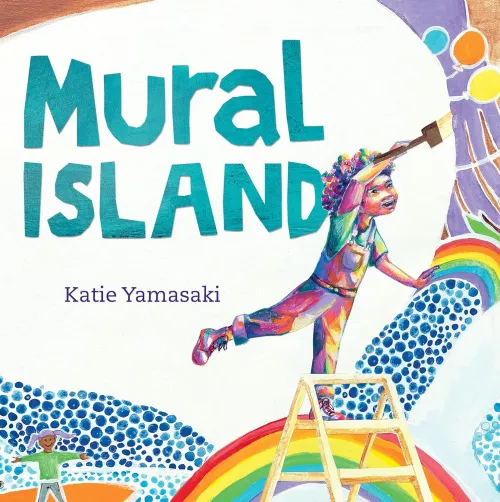Share this book
Have art supplies on hand after a read-aloud of Mural Island and let students collaborate on their own evolving, mixed-media mural that celebrates Read Across America and the joy of reading! Begin with a class conversation about how books and reading make them feel. Prompt them to consider how they might express those feelings—along with memories of favorite book characters or things they’ve learned from reading—using color, shape, and texture.
Make space for several long paper panels or cut a heavy-duty drop cloth to size to serve as the canvas for the mural. Provide a variety of materials such as paints, markers, oil pastels, stamps, ink, and brushes to invite exploration and layering (adding individual elements on top of each other). Keep the setup accessible so students can return to it regularly.
Start with each student making a first contribution to the mural that expresses something personal about their relationship to reading. Then, whenever they read something new, they add to the mural, contributing their readers' response as artistic expressions that reflect how what they read made them feel, depict a favorite character, or illustrate something they learned or that surprised them.
Over time, the mural becomes a shared portrait of students’ reading lives—layered, expressive, and ever-changing, celebrating creativity, the joy of reading and the collective experience of growing through stories.
Questions for Discussion or Reflective Writing
- How do the illustrations help you imagine yourself in the story? How does the artwork help you feel Kengi’s passion for painting?
- How does Kenji feel about making art? Why do you think Kenji draws everywhere on everything? What kinds of reactions does Kenji get to their works of art?
- Why does Kenji think their teacher is sending them to art jail? What does Ms. Beatriz say that makes them wonder?
- How does Kenji feel about painting at Mural Island?
- How does Kenji feel when their masterpiece is painted over? How would you feel? Do you think art is still important even if it doesn’t last forever?
- Have you seen murals or public art in your community? How do you feel when you view this artwork? Does it make your community more beautiful or interesting? Why or why not?
Related Resources
Building Community with Murals from the Smithsonian Education
Bookmaking Tutorials with Katie Yamasaki from the Ezra Jack Keats Foundation
Art and Artists from Start with a Book
More Titles to Try
-
The Artivist
by Nikkolas Smith
-
Everything Naomi Loved
by Katie Yamasaki and Ian Lendler
-
Hey, Wall: A Story of Art and Community
by Susan Verde, illustrated by John Parra
-
Leo and the Pink Marker
by Mariyka Foster
-
Maybe Something Beautiful: How Art Transformed a Neighborhood
by F. Isabel Campoy and Theresa Howell, illustrated by Rafael López
Stay on top of current education news


